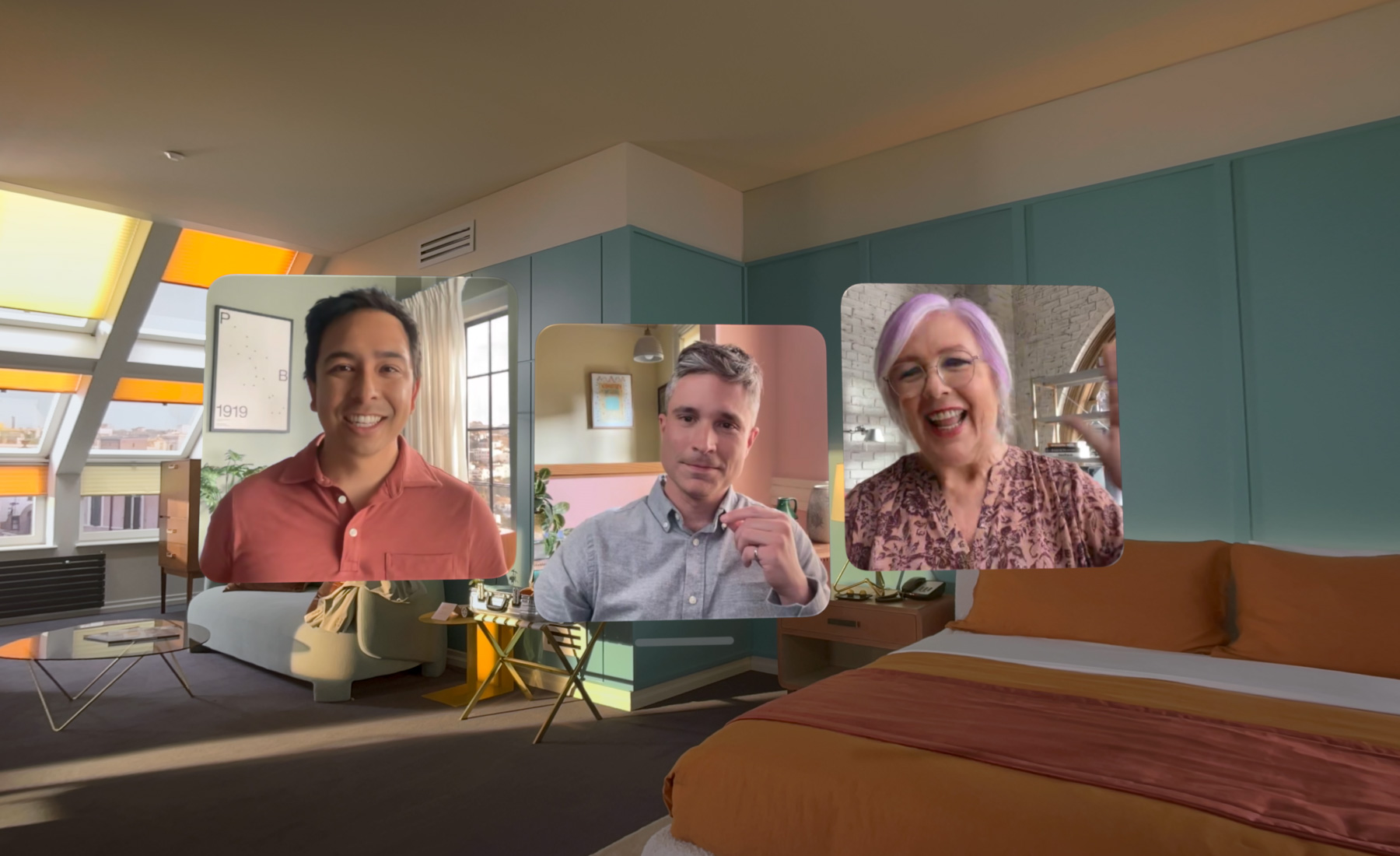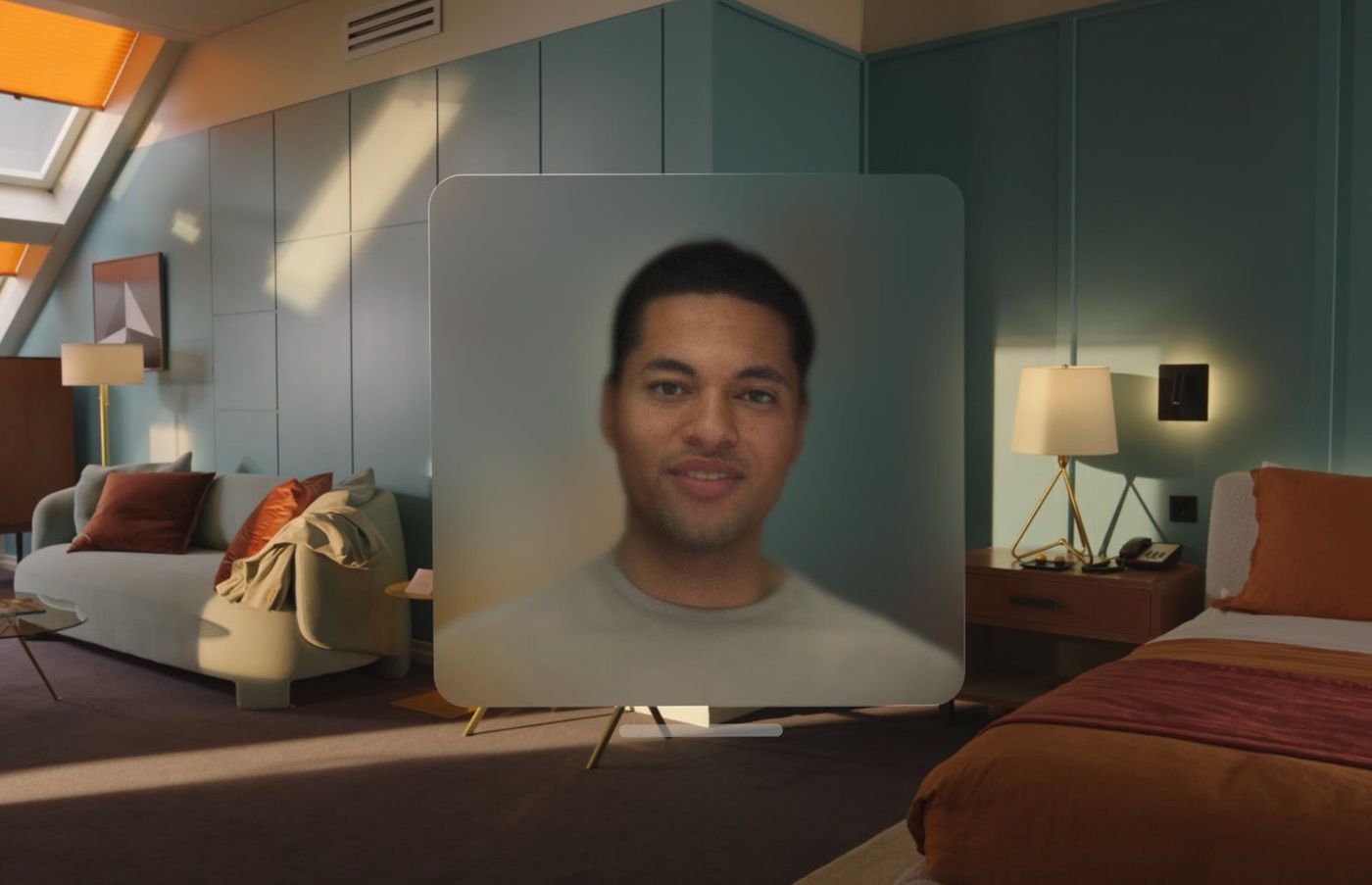
Apple last month released the visionOS SDK so developers can work on apps for Apple Vision Pro ahead of the official launch in 2024. At the time, we found out some unannounced details about the device. Now with the second beta of visionOS available to developers, we have a few more tidbits to share.
Table of contents
FaceTime on Apple Vision Pro
Apple spent a bunch of time showing how Vision Pro enables a new FaceTime experience in augmented reality. You can see other people’s video streams floating around you – and if the other person also has a Vision Pro, you’ll see their 3D Persona.
But thanks to the visionOS beta firmware, we now know more about FaceTime on the Apple Vision Pro. For example, while Group FaceTime allows up to 32 participants at once, it seems Vision Pro will only show up to 9 people simultaneously. “You can pin up to nine people. To pin this person, unpin another one first,” a message associated with the FaceTime app reads.
This doesn’t mean that Group FaceTime won’t support more than nine people on the same call, but that’s the limit on the number of people who can be simultaneously pinned to remain visible during a call.

Interestingly, it seems that the Environments feature will also be available for FaceTime calls on Apple Vision Pro. For those unfamiliar, Environments offers a series of immersive backgrounds so that you can switch between seeing the real world or one of these virtual scenarios.
As spotted by 9to5Mac, Vision Pro users will be able to share their current Environment with the other person during a FaceTime call, meaning both people will see the same background. There’s also a button to quickly toggle the Environments mode between full, half, minimum, or off.
Persona Virtual Camera
Unlike the iPhone and iPad, Apple Vision Pro has a privacy measure preventing third-party apps from accessing the built-in cameras. However, as the company detailed last month, apps will be able to capture photos and videos using the user’s Persona. visionOS beta 2 makes this clear by renaming the Camera settings to “Persona Virtual Camera.”

Optic ID
Apple Vision Pro is equipped with Optic ID, which scans the iris of the eyes to authenticate the user, similar to Touch ID and Face ID. However, in some situations, users will have to double-click the Top Button to confirm authentication – such as when purchasing apps or paying with Apple Pay. It will work similarly to Face ID on the iPhone and iPad.
Another related detail is that Mac Display mode, which turns Apple Vision Pro into an external monitor for the Mac, requires Optic ID authentication. This should prevent Guest Users from accessing content from a Mac connected to that Vision Pro. Similarly, Apple Pay is completely unavailable in Guest Mode.
Installing apps from an iPhone or iPad
Just as you can use your iPhone to install apps to a paired Apple Watch, users will have the option to install apps to a Vision Pro from their iPhone or iPad. Strings added to iOS 17 beta 4 say:
This app is only available for Apple Vision Pro
This will download to your Apple Vision Pro. If the download doesn’t start automatically, open the App Store on your Apple Vision Pro, then go to Purchased to download it manually.
Hand Pointer
In one of the WWDC 2023 sessions, Apple demonstrated some of the visionOS accessibility features. This includes a Hand Pointer that lets users know exactly where they’re clicking in the interface. This feature was added to the latest visionOS beta and can be enabled by double-tapping both your middle finger and thumb.

Force quit apps
Every operating system is susceptible to bugs, especially a platform still under development. Those who experience malfunctioning apps can force quit them by holding down both the Digital Crown and the Top Button for a few seconds.
Re-enroll eye or hand tracking
If, for some reason, Apple Vision Pro stops tracking your eyes or hands properly while you’re using it, there’s a way to quickly recalibrate the sensors. All you have to do is click the Top Button four times. After that, visionOS will take the user to the calibration screen, which also appears during the first setup.
Swapping the Light Seal
According to Apple, Vision Pro has some modular parts to better fit different face shapes. The latest beta adds an animated guide that shows users how they can swap out the Light Seal, which will be available in various sizes.

More about visionOS and Apple Vision Pro
Developers can download the visionOS SDK through the Apple Developer website. It’s worth noting that developers can now request a Vision Pro Developer Kit to run their apps on the new device. However, Apple Vision Pro won’t hit stores until 2024. The device will start at $3,499.
- Apple VP Alan Dye talks visionOS interface design for Vision Pro in podcast interview
- Apple announces developer labs to promote App Store and Vision Pro features
Add 9to5Mac to your Google News feed.
FTC: We use income earning auto affiliate links. More.






